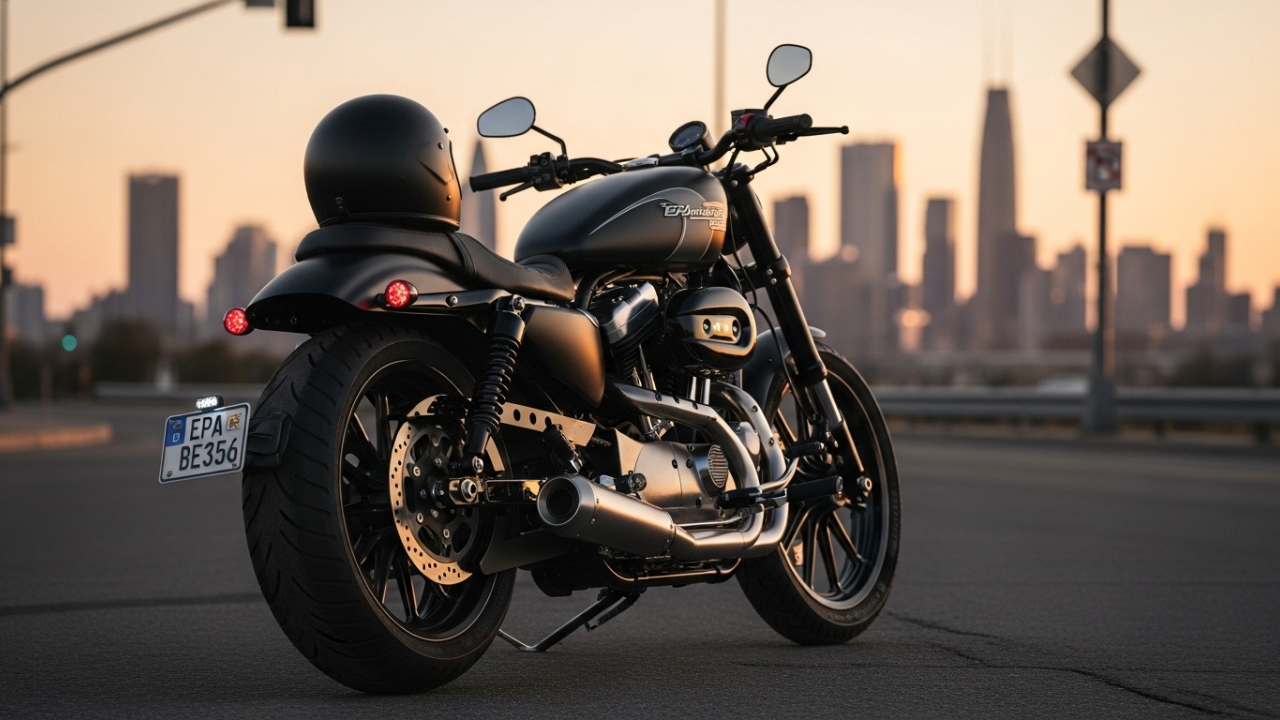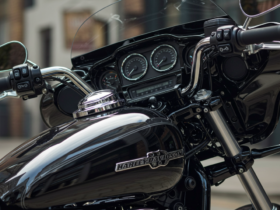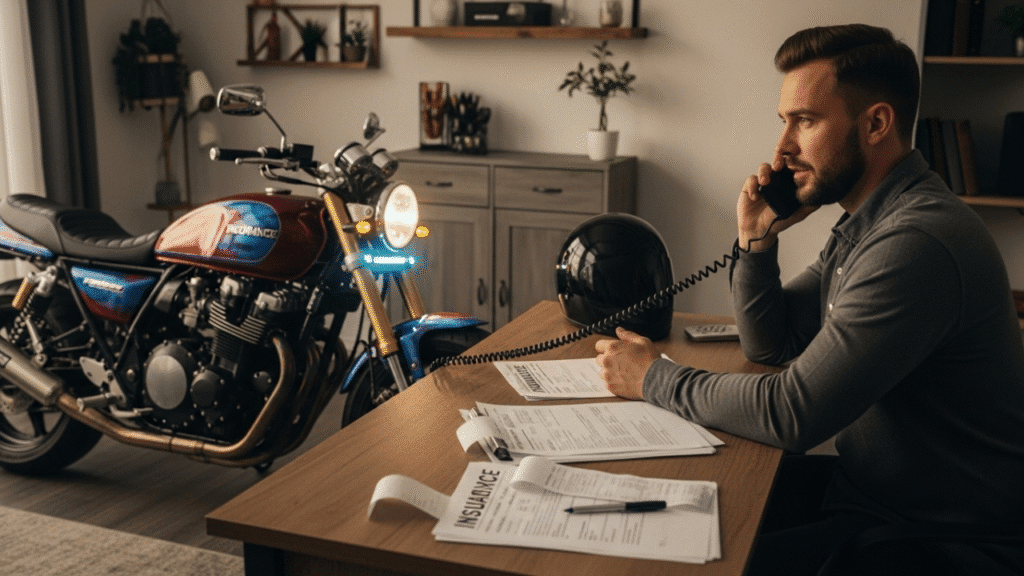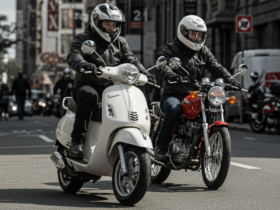Hi rider, and you are just like me; your bike is not your means of transport. It is your way out, your artistic outlet and it is freedom.
By 2025, though, personalization of your bicycle is not quite so simple anymore. This does not imply that you will always have to ride stock, it just implies that you have to be smart in the approach you take. There is nothing worst than wasting money and time on a ride that cannot be insured or which will not pass inspection.
What I intend to do in this guide is to assist you in determining changes that are legal, yet still, personal. We will discuss such broad issues as emissions and noise, and also small things such as the location of turn signals.
Key Takeaways
- You can still modify your bike in the year 2025, unless you do it outside the laws.
- Two of the trouble spots that most riders encounter are cultivation and noise pollution.
- Put all receipts and paperwork; evidence, this is something that counts like never before.
- Before running into any project, it is better to consult your local guidelines and regulations.
- And keep in mind that you can work smart and not hard. Laws are set to order chaos, they do not control the creative mind.
Let’s Talk About What Customizing Really Means Now
As a beginner in biking, I had the assumption that customizing involves physically changing the look of the bike- say change of colors or radiating handling.
Any minor change in 2025 is subjected to legal perusal. It is no longer about dream build, but you must take it through all the legal, bio-friendly and regulation tests.
Take exhausts as a case in point. It may be the best improvement in terms of visual appearance and sound, that slip-on muffler, but by not reaching EPA emission standards you are out of luck.
This applies to handle bars, lightings and even paints to some degree in case it is too reflective to lure the other road users. By 2025, personalizing will be wearing something in your personal flair and doing something safely that is not against the law.
Exhaust Mods: Where Most Riders Mess Up
Let me share a little story with you. My friend Jake got a new bike last year and he put on a full aftermarket exhaust system. It sounded like thunder, looked slick—but it had no EPA stamp. A month later, he got pulled over, ticketed, and his bike was flagged. The fix? Buying another system that was certified.
So what do you do differently? Always look for EPA-approved systems first. If you’re purchasing online, make sure the seller clearly states compliance info. As far as your ride is concerned, without those stamps or plates screaming “EPA” it’s treated as a pollution contraption.
Emission Tests Are No Joke in 2025
Depending on where you live, your bike might be subject to an emissions test before it can be registered. And let me tell you, it’s not just a visual inspection anymore. Many states use electronic scanners or tailpipe testers now.
If your mod messes with the catalytic converter or fuel system, you’re running a risk. Even fuel tuners that alter the air/fuel mix can make your bike fail. And in some places, a failed test means you have to tow the bike home.
The Noise Factor: It’s Not Just About Being Loud
Some motorcycle enthusiasts enjoy the roar of the engine noise. I get it. But in 2025, noise laws are stricter than ever. And it’s not only California anymore. New York, Oregon, and Florida have their own restrictions—some as low as 86 decibels.
This means a straight-pipe modification could potentially make your bike a legal hazard the moment you fire it up. Even approved pipes may be too quiet if baffles are removed. If you are not sure how loud your bike is, check out test stations—it’s cheaper than a ticket.
Let’s Talk Lights: Bright Doesn’t Always Mean Legal
Many new riders inquire me whether they can fit LED strips below their bicycle.
The answer is short?
Yes. The answer to that question is the longer one? Be careful.
The lights will be blue and red, which is a no-go area since they are used on emergency cars.
No go is also anything that flashes, spins, or strobes. Want to keep on the safe side? Use white or amber lights, front: red at the back.
Ensure that the lights are facing the right position and they should not blind motorists. And never forget to check the regulations in your state one more time, some states even have restrictions about the brightness of those LEDs.
Frame and Suspension Mods: Know Your Limits
You can improve the beauty of your bike by changing the height of the bike which should be done in a moderate manner.
The safety is the most important factor regarding riding your motorbike and that is why the handlebars may not extend above your shoulders in the seated position.
In addition suspensions cannot hoist the frame too high because it has the potential of interfering with braking causing the car to be off-balance. I have tried once a springer front end which lifted my bike up three inches.
Ain’t lookin’ cool- rode like trash. Did not pass inspections, either.
I have now made it a habit to test changes on myself before I do any changes. You can go ahead and test it, but see to it that it does not jeopardize your control since once that happens, it is not worth it.
Turn Signals and License Plates: Small Parts, Big Fines
The above mentioned issues do not seem like something serious?
However, what I have observed is that bike authorities tend to stop riders because of signal and plates problems a lot. In case of motorcycle plates, they should not be hidden, they should be readable at least 50 feet in day and 50 feet in night time.
You cannot mount it around the side and slide under the seat; it is a big no unless you have a state that allows that.
Turn signals should be separated by a certain length which is generally 9 inches in the rear view and this has to be seen during the daylight. When you change to the small LEDs make sure they are DOT approved. There is no sense in failure in the inspection to appear smooth.
You’ll Need Paperwork—Lots of It
I keep a folder in my garage just for bike mods. Sounds overkill, but it’s saved me more than once. Anytime I purchase a part, I make sure to print the product pages and receipts along with capturing photos post installation of the product.
In case I get pulled over or go for an inspection, I don’t need to explain anything. I just need to show prove documents. The peace of mind and calmness it brings to the officer is fantastic. Arguing roadside is never fun and riding with proof of compliance simplifies everything.
Insurance and Custom Bikes: Talk to Your Agent
Insurance skips out on paying for damages for a multitude of reasons. While some people only think about liability insurance during a crash, they don’t think about the consequences that come from failing to tell the provider about mods on the bike. Customizations tell a different story than the one being fed, and engages in what’s called insurance fraud. If you don’t want to end up like plenty of horror stories out there like the one where someone drove off with their bike and the supposedly insured bike in reality did not get insured, you need to report all modifications done on the bike to the insurance provider.
It’s always better to do yourself a favor. Call your provider and report the matters of mods done on the bike. If your bike exhaust, lights, or paint job increases the value of the bike, they need to know. While some providers might charge a bit more or do so with no extra charge, at least you will have some coverage.
Every State Plays by Its Own Rules
Just as it is unwise to assume all states have the same rules and policies regarding licensing, do not make the same mistake when it comes to bike modifications. There are some states that will carry out inspections for minor bike modifications while there are others which won’t take motorcycles into consideration altogether. Some states care about emission while others only focus on vehicles.
Before any modification is made, visit the DMV website of the state you live in, or better yet use motorcycle modification regulations as search keywords. Don’t be left wandering aimlessly, if in doubt just call. You don’t need to spend too much time on a five minute call that can help you in the long run.
Build Smart. Ride Free.
Here’s the story: Yes, you can still make your bike your own in 2025. You just need to plan a bit more. I’ve built bikes with custom paint, exhaust, handlebars, and lights–all legal. I just needed to be strategic.
Start small though. One change at a time. Make sure each part is certified or approved. Keep all your documents in order. Verify state rules before each modification. Stay smart and you will stay on the road.
And don’t forget – style means nothing if you can’t ride it comfortably. Build for both the looks and functionality.
Closing Thoughts from One Rider to Another
Every time I finish a mod and take my bike out for the first ride, it brings out the kid in me–that is the beauty of customizing. But we don’t live in the wild west anymore. In 2025, every decision has to be legal, not just exciting.
The good news it’s still very possible! You can build a head-turning bike that also passes inspection. You just need the right plan. So grab your tools, check your local laws, and start slow. You’ve got this road warrior.
And if you ever wonder, “How to customize your bike legally in 2025?” – remember, it’s not about limits, it’s about riding smart.
Stay lawful. Stay optional. Continue creating.



















Leave a Reply